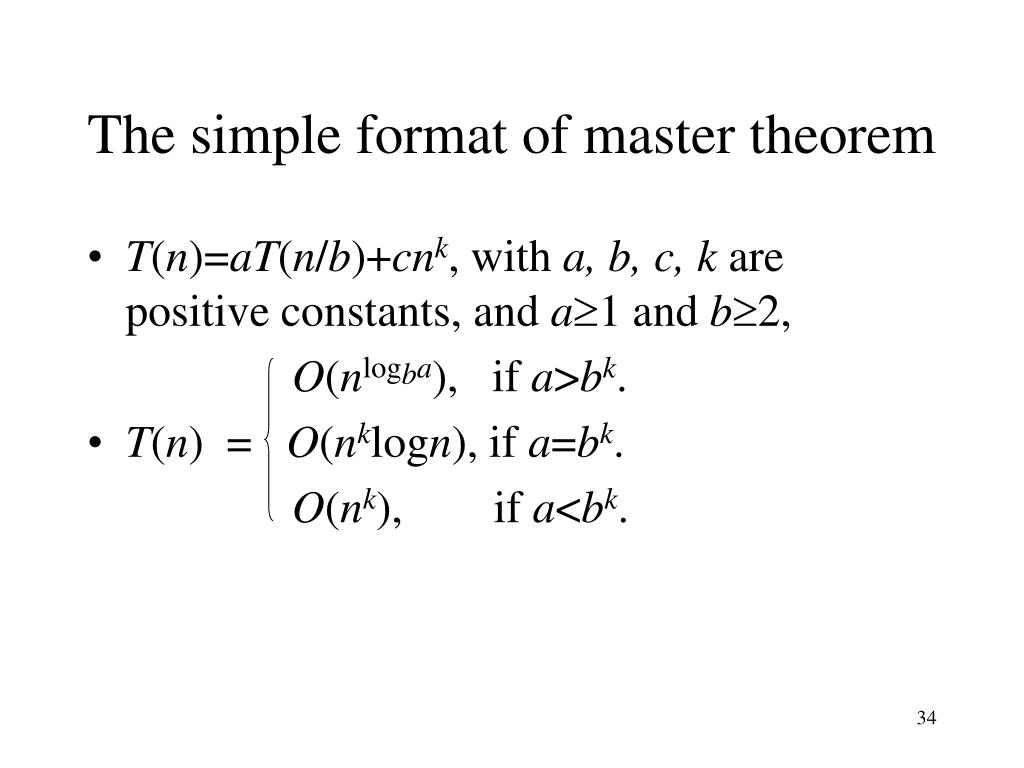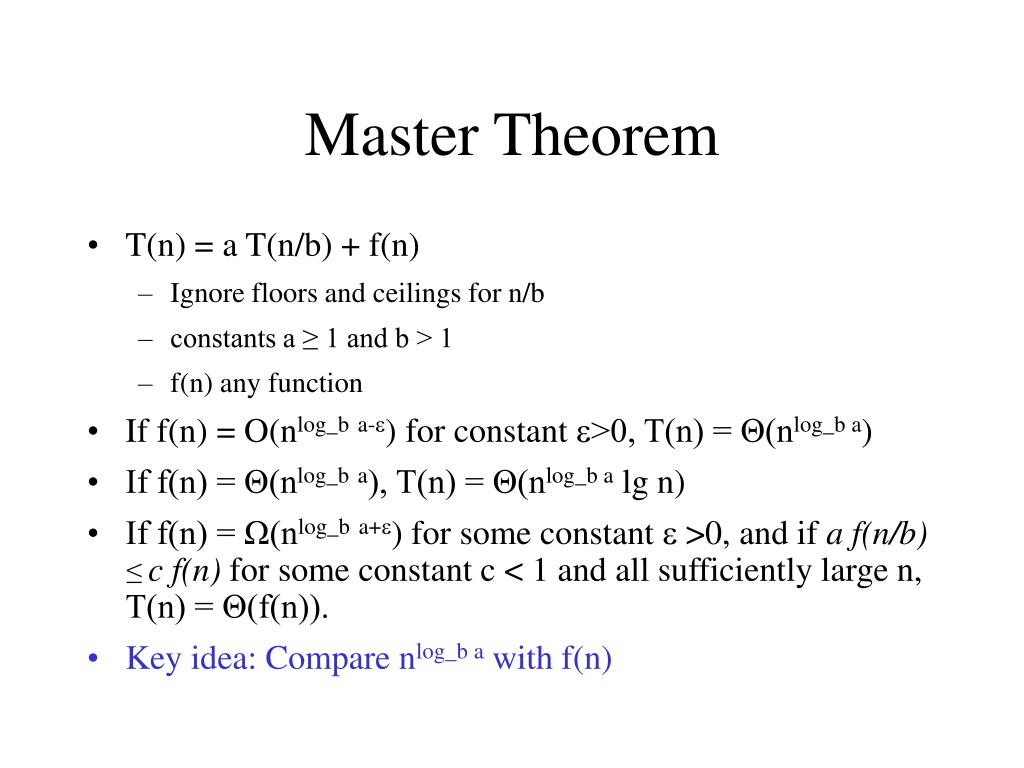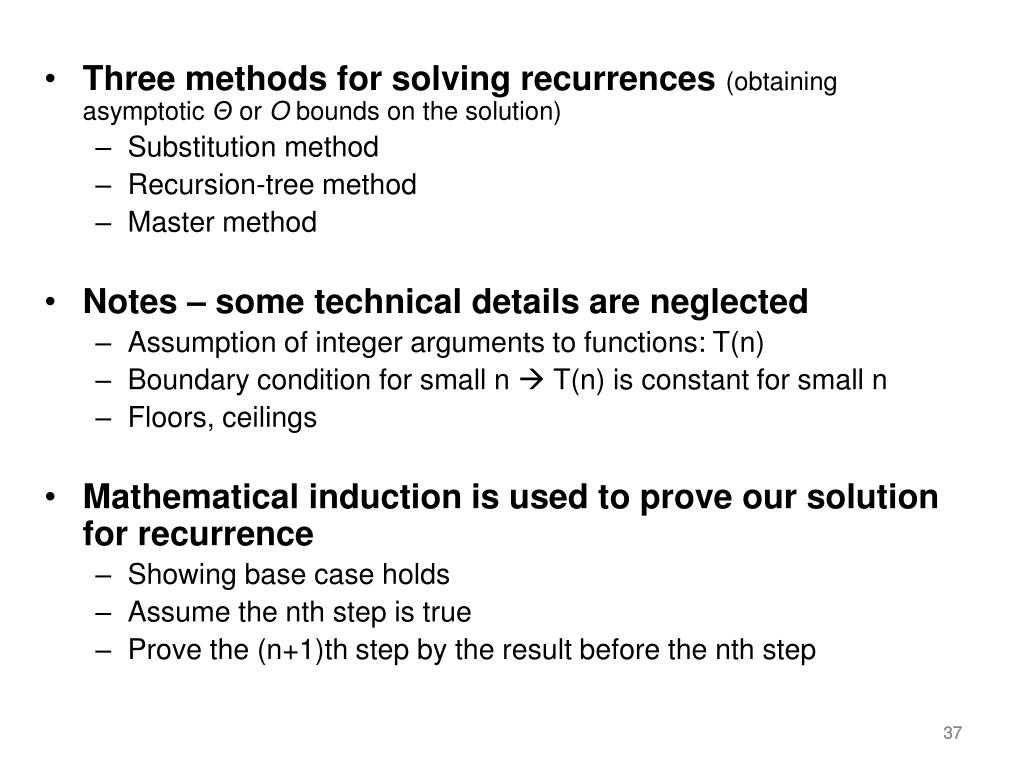Master Theorem Floor Ceiling

Endgroup marnixklooster reinstatemonica jan 7 14 at 19 58.
Master theorem floor ceiling. In the analysis of algorithms the master theorem for divide and conquer recurrences provides an asymptotic analysis using big o notation for recurrence relations of types that occur in the analysis of many divide and conquer algorithms the approach was first presented by jon bentley dorothea haken and james b. The first part of the proof of the master theorem analyzes the recurrence t n at n b f n. For the master method under the assumption that n is an exact power of b 1 where b need not be an integer. And that s what the master theorem basically does.
The analysis is broken into three lemmas. I have tried to make this question self contained by snipping the appropriate parts from this book. If a 1 and b 1 are constants and f n is an asymptotically positive function then the time complexity of a recursive relation is given by. We ll prove this in the next section we normally find it convenient therefore to omit the floor and ceiling functions when writing divide and conquer recurrences of this form.
So the master theorem says if you have a recurrence relation t n equals a some constant times t the ceiling of n divided by b a polynomial in n with degree d. And that ceiling by the way could just as well be a floor or not be there at all if n were a power of b. 1 where a b are constants. 4 4 1 the proof for exact powers.
For integer indexed recurrences analyzable by akra bazzi you can ignore the floor and ceiling always since their perturbations are at most 1. Begingroup did i think the op has a valid question as this is one of several points in the master theorem proof where the authors gloss over details. Saxe in 1980 where it was described as a unifying method for solving such. The master method depends on the following theorem.
Proof of the master method theorem master method consider the recurrence t n at n b f n. Then a if f n o nlog b a for some constant 0 then t n o nlog b a.










































